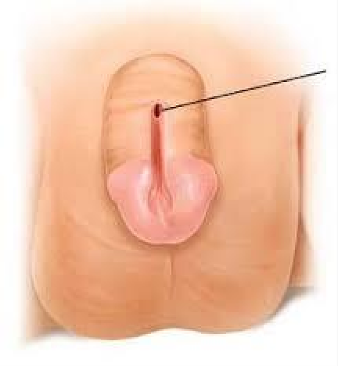In caring for a child with an open fracture, the nurse should carefully assess for
osteoarthritis.
epiphyseal disruption.
infection.
periosteum thickening.
The Correct Answer is C
When caring for a child with an open fracture, the nurse should carefully assess for signs and symptoms of infection. An open fracture refers to a fracture where the bone is exposed through the skin, creating a direct pathway for microorganisms to enter and cause infection. Infection is a significant concern in open fractures and can lead to serious complications if not identified and treated promptly. Signs of infection may include increased pain, swelling, redness, warmth, purulent drainage, fever, or systemic signs of infection such as elevated white blood cell count.
Osteoarthritis in (option A) is incorrect because it, is not an immediate concern in the care of a child with an open fracture. Osteoarthritis refers to degenerative joint disease that typically develops over time and is not directly related to the acute management of an open fracture.
epiphyseal disruption in (option B) is incorrect because it, refers to an injury involving the growth plate (epiphyseal plate) that can affect bone growth and development. While it is a potential concern in fractures that involve the growth plate, it is not specific to open fractures and may not be an immediate priority in the initial assessment of an open fracture.
periosteum thickening in (option D) is incorrect because it, may occur in response to injury and fracture healing, but it is not specifically associated with open fractures and is not a primary focus in the initial assessment of an open fracture.
Nursing Test Bank
Naxlex Comprehensive Predictor Exams
Related Questions
Correct Answer is C
Explanation
Epispadias is a congenital condition in which the urethral opening is not located at the tip of the penis as is typical but rather along the ventral surface (underside) of the penis. In severe cases, the urethral opening may extend all the way to the bladder.
absence of a urethral opening in (option A) is incorrect because it, describes a condition called urethral agenesis or aplasia, where the urethral opening is completely absent. This is a different condition from epispadias.
a penis shorter than usual for age, in (option B) is incorrect because it is not specific to epispadias and could be caused by various factors unrelated to the condition.
a urethral opening along the dorsal surface (topside) of the penis in (option D) is incorrect because it, is a condition called hypospadias. Hypospadias is another congenital anomaly where the urethral opening is located on the underside or along the ventral surface of the penis, but it is not synonymous with epispadias.
Therefore, epispadias specifically refers to the urethral opening being situated along the ventral surface of the penis.

Correct Answer is B
Explanation
The statement that best describes why infants are at greater risk for dehydration than older children is option B. Infants have an increased extracellular fluid volume compared to older children. This means that a larger proportion of their total body fluid is located outside the cells, in the extracellular compartment. This higher extracellular fluid volume makes infants more susceptible to fluid losses and dehydration if they experience inadequate fluid intake or increased fluid losses.
infants have an increased ability to concentrate urine in (option A), is incorrect. Infants have limited renal function and may have difficulty concentrating urine compared to older children and adults. This can contribute to a higher risk of dehydration in infants.
infants have a greater volume of intracellular fluid in (option C), is incorrect. The volume of intracellular fluid is not the primary factor contributing to the increased risk of dehydration in infants.
infants have a smaller body surface area in (option D) is incorrect because it, is not directly related to the increased risk of dehydration. Body surface area influences heat exchange and fluid loss through sweating but is not the main factor contributing to the higher risk of dehydration in infants.
Whether you are a student looking to ace your exams or a practicing nurse seeking to enhance your expertise , our nursing education contents will empower you with the confidence and competence to make a difference in the lives of patients and become a respected leader in the healthcare field.
Visit Naxlex, invest in your future and unlock endless possibilities with our unparalleled nursing education contents today
Report Wrong Answer on the Current Question
Do you disagree with the answer? If yes, what is your expected answer? Explain.
Kindly be descriptive with the issue you are facing.
